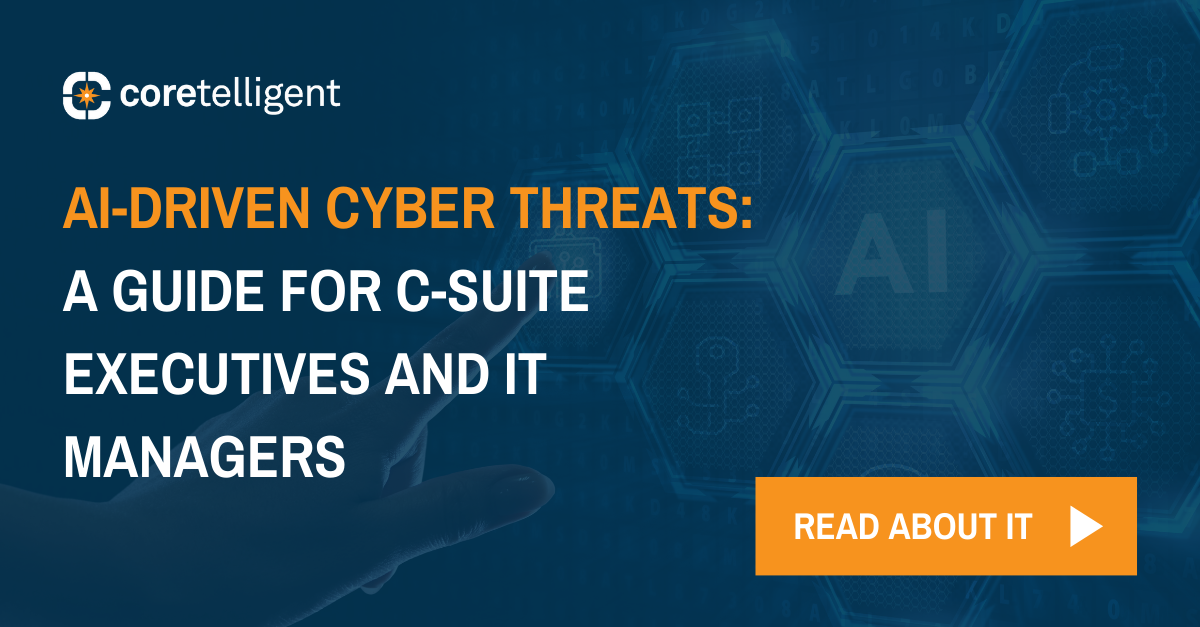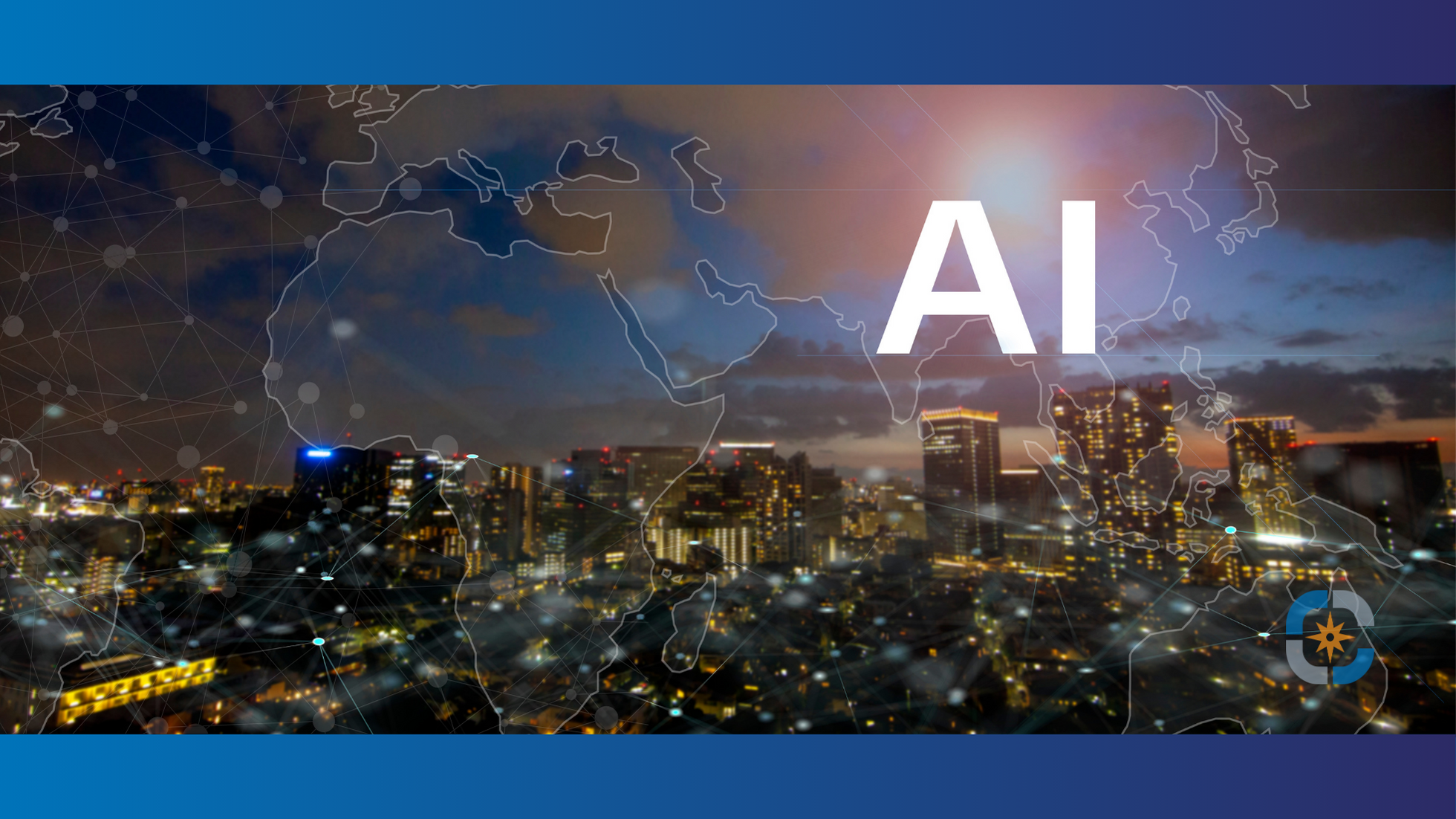AI Implementation in Healthcare has ushered in a transformative era, where the integration of Artificial Intelligence (AI) is not merely an innovation but a necessity to enhance patient care and optimize data management.
The healthcare and life sciences industry generates over 30% of all global data, and the challenge is to efficiently and securely harness this data to drive informed decision-making and streamline operations. Coretelligent stands at the forefront of facilitating healthcare businesses to navigate through this digital transformation, offering tailored “Healthcare AI Integration Solutions” and expertise in implementing robust AI platforms like Microsoft Azure.
The Pinnacle of Data Management in Healthcare
The vast data generated by healthcare institutions, from electronic health records to imaging, often remains underutilized, with approximately 95% of data generated by hospitals going unused.
The integration of AI technologies, such as Microsoft Power, Fabric and Azure AI, presents a viable solution to this data underutilization, offering tools that consolidate, standardize, and make data accessible in a unified platform. Coretelligent’s approach to AI-Driven Data Management ensures that healthcare organizations, including medical facilities, can leverage these AI tools to their fullest potential, ensuring data is not just accumulated but also effectively utilized to enhance patient care and operational efficiency.
Enhancing Patient and Provider Experiences with AI
Microsoft’s Azure AI introduces tools like Azure AI Health Bot, Text Analytics for health, and Azure AI Health Insights, each designed to streamline patient-provider interactions, simplify clinical reports, and provide a consolidated view of a patient’s medical history using generative AI.
This tool is a wonder for healthcare professionals, aiding in managing clinical and administrative tasks while also enhancing patient interactions with personalized experiences. It’s a step towards individualized precision medicine, quicker research on critical diseases, and innovative patient care. The Health Bot also plays a pivotal role in making healthcare data more accessible and analytics-ready, facilitating the creation of insightful patient timelines for better care delivery. With the Health Bot, healthcare is not just a service, but an engaging, interactive experience, marking a promising stride towards a patient-centric approach.
AI Implementation in Healthcare: Real-World Impact
In an era where technology is the driving force behind evolution, healthcare is no exception. Microsoft’s Azure AI Health Bot is just one example of how cutting-edge technology can be harnessed to revolutionize healthcare delivery and patient engagement. The impact of this intelligent tool is multi-faceted and resonates through various layers of the healthcare ecosystem.
Forecasted & Current Benefits:
- Enhanced Patient Engagement: One of the hallmark features of the Azure AI Health Bot is its ability to foster enhanced patient engagement. By powering intuitive chatbot experiences, it provides patients with an interactive platform to seek information, schedule appointments, and have a personalized healthcare experience. This not only empowers patients with better control over their healthcare journey but also alleviates the administrative burden on healthcare providers that find themselves answering the same questions.
- Precision Medicine: The promise of individualized precision medicine is brought a step closer to reality with this technology. By facilitating the analysis of vast amounts of data and creating actionable patient timelines, the Health Bot enables healthcare professionals to devise personalized treatment plans. This tailored approach could augment the effectiveness of treatments and improves overall patient outcomes.
- Accelerated Research: The realm of medical research is often hampered by the bottleneck of data management and analysis. The Health Bot, with its data normalization and analytics readiness features, accelerates the pace at which critical research on life-threatening diseases can be conducted. This acceleration could potentially lead to quicker discoveries of treatments and cures.
- Optimized Administrative Workflows: The administrative workload in healthcare settings is often overwhelming. The Health Bot serves as a virtual co-pilot, managing administrative tasks and allowing healthcare professionals to focus more on patient care rather than paperwork. This optimization of workflows is crucial for reducing clinician burnout and enhancing the efficiency of healthcare delivery.
- Data Privacy and Compliance: With a feature like de-identification service, the Health Bot ensures that data privacy and compliance are upheld while still retaining the clinical relevance of the data. This is paramount in a domain where data privacy is non-negotiable.
- Global Health Equity: With multilingual support, the Health Bot transcends linguistic barriers, making healthcare information and services accessible to a broader spectrum of individuals regardless of language, contributing to global health equity.
AI Implementation in Healthcare serves as a bridge between healthcare providers and patients, facilitating a collaborative, informed, and personalized healthcare journey. Through such innovations, we are not just witnessing a transformation in healthcare delivery but a move towards a more patient-centric, accessible, and equitable healthcare system.
Recap: What AI Can do for you:
- Clinical Assistance and Administrative Workloads Management: The Azure AI Health Bot is being expanded to allow healthcare organizations to build co-pilots for their healthcare professionals. This will help manage both administrative and clinical workloads, which in turn can enhance the patient experiences.
- Specialized Chatbot Experiences: The Health Bot is designed to assist healthcare organizations in creating specialized chatbot experiences. These chatbots are now powered by generative AI, enabling high-value conversational scenarios specifically tailored for the health and life sciences industry. This could potentially facilitate better interaction between healthcare professionals and patients, or provide patients with an easily accessible source of information.
- Actionable Insights for Patient Care: The Azure AI Health Bot, along with other tools, is portrayed as a part of a broader ecosystem that aims at making precision medicine more individualized, speeding up research for life-threatening diseases, and finding innovative ways to improve patient care.
- Data Accessibility and Normalization: Before AI and machine learning can be effectively utilized, the data needs to be analytics-ready. This involves making healthcare data accessible and normalizing it for analytics and AI applications in the cloud. Although not directly mentioned, it’s implied that tools like the Azure AI Health Bot could play a part in this data preparation process by possibly extracting or processing data.
- Enhanced Patient Engagement: Through examples, the article illustrates how a patient could interact with a chatbot (possibly powered by Azure AI Health Bot) on a hospital website to get answers about medications and set up appointments, highlighting an enhanced engagement experience.
- Support for Healthcare Professionals: The health bot facilitates the creation of actionable, chronological patient timelines based on clinical data and evidence. This could be crucial in providing healthcare professionals with a clear and organized view of a patient’s medical history, aiding in better diagnosis and treatment planning.
Coretelligent’s Process: Tailoring AI Solutions to Healthcare
Selecting and Customizing AI Models: Coretelligent aids healthcare organizations in choosing the right AI models, like Azure AI, aligning them with specific use cases, and customizing them by training with relevant organizational data.
Data Lake Creation and Management: We facilitate the creation of data lakes and data warehouses by implementing a comprehensive data management strategy. We ensure efficient management and utilization of structured and unstructured data by AI services.
Ensuring Security and Data Integrity: With a focus on “Secure Healthcare AI Implementations,” we prioritize safeguarding data and ensuring its integrity, providing a secure foundation for AI integrations.
Conclusion
As the industry continues to evolve, implementing AI in healthcare will play a pivotal role in shaping future operations, patient care, and data management strategies. Coretelligent, with its expertise in digital transformation and AI Integration Solutions stands as a strategic partner for healthcare organizations. We help to ensure the integration and utilization of AI, such as Azure AI and many more, is not just seamless but also strategically aligned with organizational objectives.
Explore a partnership with Coretelligent and navigate the future of healthcare with confidence, ensuring that your organization is not just keeping pace with digital transformation but leveraging it to enhance patient care and operational efficiency. Contact us today!






